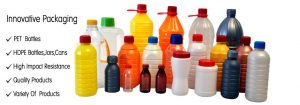
Pet Products Business and Its Market Basics -
The full form of PET is polyethylene terephthalate, which is a form of polyester. PET being easily moldable, is usable for manufacturing many daily use things such as plastic bottles, containers for beverages, medicines, and many other products. It is highly recommended among people as robust yet lightweight, non-reactive, economical, and shatterproof. Various health authorities worldwide have given the green light for its safety in medical applications.
Related Projects:- Plastics, Polymers and Resins, Polypropylene (PP), Polystyrene (PS), Acrylonitrile butadiene styrene (ABS), Polyethylene terephthalate (PET), Polyester, PA, Poly(vinyl chloride) (PVC), Polyurethanes (PU), Polycarbonate (PC), Polyethylene (PE)Projects
PET Market Size – The growth of PET market is solely due to the rising demands of PET in packaging foods and beverages. Also the demand for replacement of glass and plastic in the bottled water and soft drink industries have made the PET markets to rise enormously.

The graph clearly demonstrates the rise of PET market size in passing years. If a company desires to begin a start-up in this sector then it would be the best thing to do. There is a clear rise in the use of PET in the coming years as well which is sufficient enough to convey that yes PET has a good future in market.
Related Books:- Plastics And Polymers, Polyester Fibers, Pet & Preform, Medical, Expanded Plastics, Polyurethane, Polyamide, Polyester Fibers, Additives, Colourants And Fillers, Extrusion, Moulding, Mould Designs, Optical Glass, Reinforced, Films, HDPE, Thermoset
The manufacture –
Ethylene glycol and terephthalic acid combine and polymerize themselves to form the PET. Heat is applied to the PET resins convert to a molten liquid, which can then be molded into any desired shape with utter ease. To distinguish PET bottles from regular bottles, we can look at the special symbol, which is imprinted on every PET bottle on the bottom or on the side. The character has a number 1 surrounded by three arrows following each other in a triangular manner below, which is written PET.
Related Videos;- Plastics Projects
Uses – -
Manufacturing PET has successfully replaced the use of glass bottles for storing soda and water. This is because of its number of qualities such as hygienic, healthy, resistant against microbes, doesn't react with foods or beverages, and will not biologically degrade. - The FDA had approved both single and repeated use of the PET bottles. The PET bottles are absolutely stable and inert, which does not degrade biologically or chemically. So the thought that the reuse of bottles can contaminate them and release harmful substances is absolutely a misconception. PET Safety Numerous health safety agencies worldwide, including the FDA, have approved PET as safe for contact with food materials and beverages. Extensive studies have proved the PET to be safe and secure. Being extraordinarily stable and inert, it doesn't react with food materials and provides resistance against micro-organisms. It is safe to such an extent that its static properties don't allow it to cause any human problems if ingested by mistake. People usually doubt whether PET release dioxins or not. The PET doesn't emit or produce dioxins as its productions require very high temperature and chlorine. PET is devoid of chlorine, so there is no chance of producing dioxins. There are no medical proofs that show the endocrine-disrupting activity of PET.
Recycling and Sustainability
PET is a highly recyclable and sustainable material. We can recycle it numerous times into containers of various shapes for storing food items, beverages, snacks, and many others. If we look at the stats, collection of around 1.5 billion pounds of PET bottles is done for recycling every year in the United States of America. Comparing the recycling rates of the United States and Europe, the Europeans seem more advanced in understanding the value of recycling packaging materials. In 2012, the recycling rate of PET was approximately 31%. By comparison, the PET recycling rate in Europe for the year 2012 was 52%. An actual example of the environmental benefits and sustainability of PET as a packaging material is the allowance a person can get for recycling the PET bottles and jars into new food-grade PET bottles and containers.
Conclusion This report on PET and its market stakes shows that PET has very high hopes of breaking records in the market. The Niir Project Consultancy Services (NPCS) provides its users detailed reports and start-up ideas which can prove to be very helpful for an entrepreneur. The scope of the report includes examining the market size, growth rate and all other aspects that may be required for a successful business. You can get all the reports on the official website of NPCS.
EVA_Art2021
Tags:- #PETManufacturing #PETproduction #Textileindustry #PETMarket #PETrecyclable #PETinvestment #DetailedProjectReport #businessconsultant #feasibilityReport #NPCS #entrepreneurindia #startupbusiness #BusinessPlan #startup #InvestInStartups #StartupIdea #startupinvestment #StartupBusinessPlan #StartupPlan #NewRelease #startupinvestment #startup #bussinessplanshub #Startupbusiness4you #StartupBusinessPlan #startupinvestment #startup #InvestInStartups